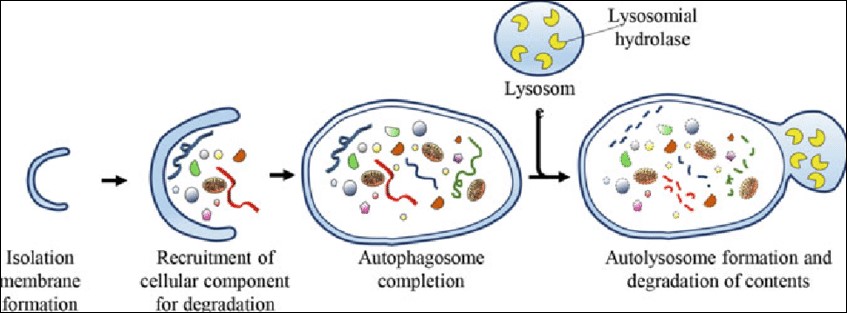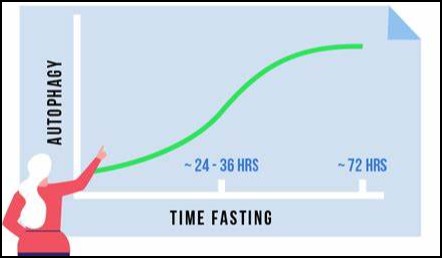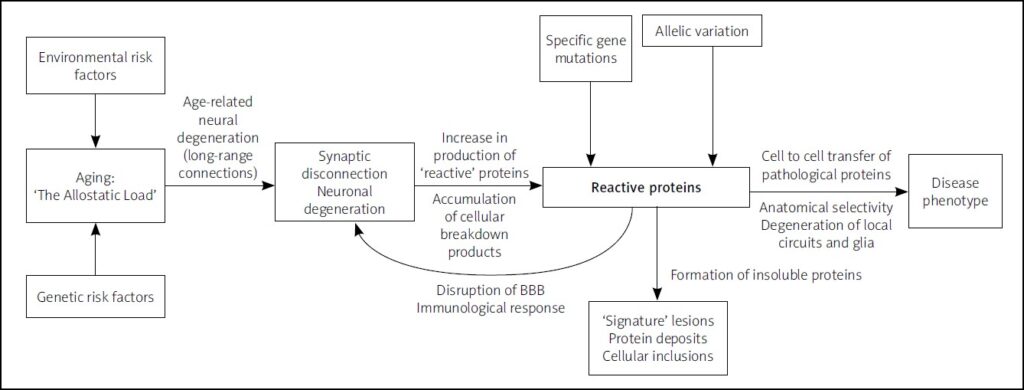Fasting: A Spiritual Concept
Fasting is a powerful spiritual practice with surprising health benefits. It’s not only a way to draw closer to God but may also help protect against Neurodegenerative disease like Alzheimer’s and Parkinson’s. This article will explore fasting from both a biblical and scientific perspective, showing how it can transform our lives both spiritually and physically.
Fasting is mentioned in both the Old and New Testaments. In the Old Testament, Jews were commanded to fast only on the Day of Atonement, Yom Kippur, the holiest day of the year (Leviticus 23:27). The New Testament doesn’t require fasting but implies that believers will fast at various times.
Spiritual Purpose of Fasting
From the biblical accounts, we see the purpose of fasting:
- A fast is usually a voluntary, total abstinence from food for the purpose of devoting oneself to seeking God.
- It is meant to focus our attention on God and deepen our fellowship with Him.
- People in the Bible fasted and prayed because they wanted God to: 1) change them, 2) change their circumstances, or 3) reveal something to them.
- Fasting is more about focus than food. Fasting is taking your focus off of the things of this world and directing it to the things of God. Fasting can thus be a means of growing closer to God.
- Fasting is about changing yourself to be in agreement with God’s plan. You need to be prepared to fulfill your role in His plan.
- Fasting denies our flesh what it wants so that we can focus more clearly on strengthening our spirits.
Fasting should have a clear purpose. We should always ask God for wisdom in regard to how and for how long He wants us to fast. Setting a time frame seems to be the biblical approach.
Fasting: A Scientific Perspective
Fasting has gained increasing attention from the scientific community due to its wide range of health benefits. These include weight loss, improved blood sugar control, reduced inflammation, enhanced heart health, better brain function, and even protection against neurodegenerative diseases.
Cellular Cleanup: Understanding Autophagy
The following is not language that most of us use frequently but it’s worth taking the time to understand.
When we fast, the body initiates a process called Autophagy. Autophagy is the body’s means of removing and recycling dysfunctional or old cells. In simple terms, autophagy works like this: a double-membrane structure called a phagophore forms around the cell debris. The phagophore engulfs the damaged components, forming an autophagosome, which then fuses with a lysosome. The lysosome, containing digestive enzymes, breaks down the cellular waste, releasing reusable components back into the body. This process removes toxic protein aggregates, excessive nutrient deposits such as lipid droplets, and dysfunctional organelles such as damaged mitochondria.
This process is vital for brain health. Promising research in animals suggests that fasting increases the production of nerve cells and could help protect against neurodegenerative diseases such as Alzheimer’s and Parkinson’s. Fasting might hold potential as a treatment for these conditions by encouraging the body’s natural cellular repair mechanisms.


What Causes Neurodegenerative Diseases?
Neurodegenerative diseases are caused by the gradual loss of function or death of nerve cells (neurons) in the brain or nervous system. As neurons deteriorate, they can’t send signals properly, which affects memory, movement, and other vital functions.
- Multiple risk factors are associated with neurodegenerative disease, including vascular disease, traumatic brain injury, metal exposure, high body mass index, alcohol consumption, milk consumption, and many others. It remains a major challenge to explain how so many apparently disparate risk factors could contribute to these disorders.
- Age is the most important of the risk factors. There is evidence that neurodegenerative disease may be an accelerated form of aging in cases of Alzheimer’s and Parkinson’s. Researchers find the misfolded proteins associated with Alzheimer’s and Parkinson’s in the healthy aging brain as well. However, several studies have demonstrated that various neurotoxicants, including pesticides, herbicides and metal ions, significantly accelerate the aggregation of these misfolded protein.
- Aging differentially affects neuroanatomical pathways. The efficiency of brain function depends on both its long and short-range anatomical connections. Neurodegenerative disease enhances the disruption of connectivity, primarily affecting long-range connections and leading to a loss of network efficiency.
- Degeneration of these pathways results in the formation of pathogenic proteins. Degeneration of a particular anatomical structure results in the release of pathogenic proteins.
- Pathogenic proteins spread along anatomical pathways. Once the pathogenic proteins form, they spread from cell to cell resulting in a subsequent formation of a deposit along the anatomical pathways.
Causes are likely multifactorial
Most cases of neurodegenerative disease are multifactorial in which interactions between external environmental and internal genetic risk factors act cumulatively over a lifetime to determine the allostatic load (the cumulative burden of chronic stress and life events) of an individual. The allostatic load:
- determines the rate of neural aging
- results in the differential breakdown of neuro-anatomical pathways influenced by their relative use or disuse during life.
A consequence of the allostatic load is degeneration of neurons and blood vessels which results in the formation of abnormally aggregated pathogenic ‘reactive’ proteins, some of which may exhibit ‘prion-like’ behavior and spread through the brain, via cell-to-cell transfer, from the initial sites of formation along neuroanatomical pathways affecting connected brain regions along the neuro-anatomical pathways. NOTE: a prion is an infectious protein that does not contain DNA or RNA. A prion derives from a normal body protein that becomes irreversibly misfolded and proliferates throughout the body possibly by acting as a template for further protein misfolding.
Various types of these ‘prion-like’ disease causing proteins are ultimately responsible for the diversity of the neurological disease phenotypes (Alzheimer’s Disease, vascular dementia, Parkinson’s Disease, etc). For example, Alzheimer’s has deposition of β-amyloid and Parkinson’s has deposition of microtubule associated protein (MAP).
Is There a Solution?
While there may not be a simple cure for neurodegenerative diseases, reducing allostatic load and staying mentally and physically active throughout life may lower the risk. Fasting can help reduce existing damage.
Some people, known as the “survival elite,” seem to possess protective factors that reduce their risk of developing neurodegenerative conditions. Ongoing research aims to uncover these factors and provide insight into preventing these diseases.

Conclusion: Fasting as a Path to Spiritual and Physical Renewal
Fasting offers both spiritual and physical benefits, helping believers grow closer to God while potentially protecting the brain from neurodegenerative diseases. By practicing fasting with clear intention and seeking God’s wisdom, we can nurture our spirit and strengthen our body, opening the door to profound personal transformation.
Related content: Spiritual Journey
